Professional Pool Service: Why True Value Goes Beyond Price
When it comes to pool service, expertise is not optional; it’s required by law. In Los Angeles County, anyone performing maintenance, disinfection,...
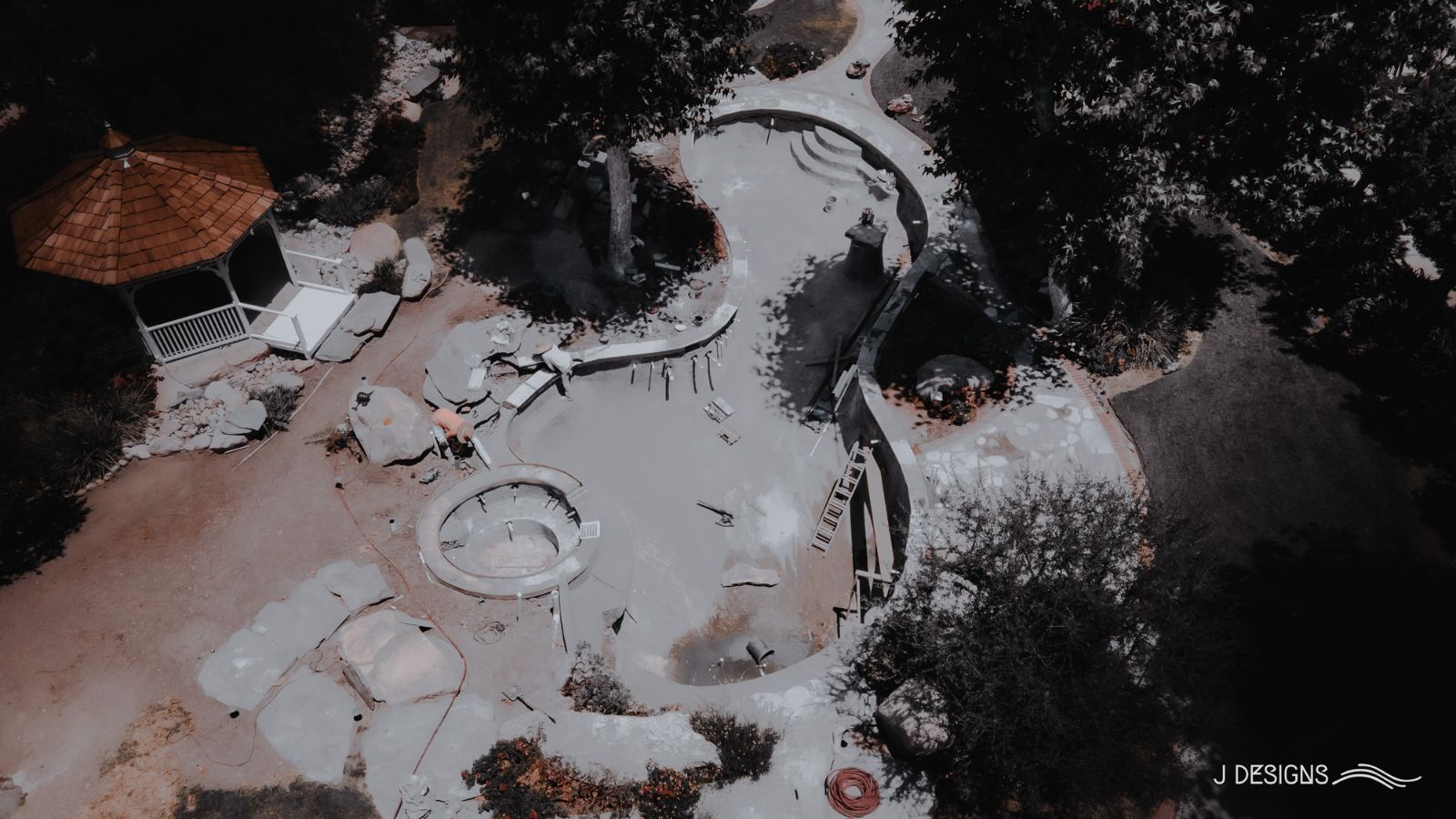
Surprises are overrated; they’re pockets of anxiety delicately wrapped in artisan gift bags.
You’ll particularly want to avoid them when you’re investing in an inground pool. An inground pool project has many hidden costs that vary depending on factors unique to your property.
Imagine you’re sitting on your balcony with an oat milk latte waiting for sunrise. You gaze at the stunning hillside view of Los Angeles, but then look down at the grassy outdoor space on your property and the entire vibe becomes… meh. That’s when it hits you: your private oasis needs an inground pool.
Before you know it, you’ve scheduled an inground pool consultation. You then get the cost estimate and find out that the construction will cost twice as much as you estimated because excavation on a hilly terrain requires more material and extra labor.
Boom. A wrecking ball has effectively just hit you off of cloud nine.
At J Designs Pool and Spa, we have over 15 years of experience in concrete pool construction. We use our wealth of experience and education to prevent our customers from experiencing daunting shock value.
This article is going to uncover three hidden costs of an inground pool project that most people are unaware of.
Let’s get to the root of the problem (literally). The plants growing near your pool may require the additional cost of landscaping before construction.
Plants and pool construction may appear completely unrelated, but certain species of palms like king palm and ficus trees have invasive root systems that can harm the pool walls and plumbing. These roots spread out horizontally under the surface of the soil and eventually damage structures in their path.
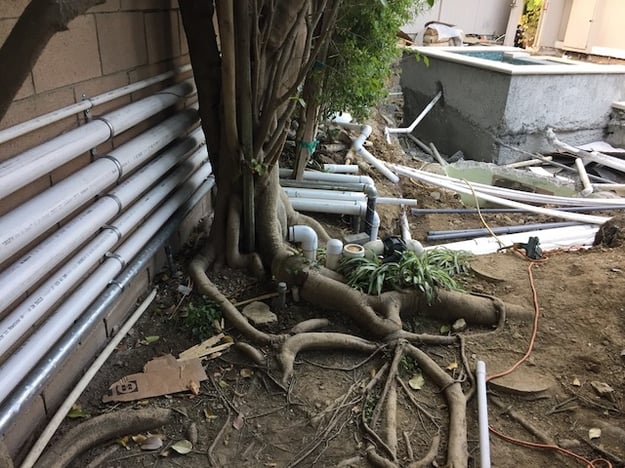
These roots need nutrients and more room to grow, and some plants need copious amounts of water to survive. Without access to enough water to be sustainable, the roots spread to the closest water source, which, in this case, would be the pool’s pipes. Typically, these pipes can’t withstand the force of invasive roots infiltrating and puncturing the pipe’s surface. The result? An expensive replumbing job and time away from enjoying your pool.
Additionally, certain trees growing near or above the pool site can wreak havoc on your pool’s entire plumbing system. The leaves, pine needles, flowers, and debris can be sucked into the pool’s skimmer, and through the skimmer, debris might pass through the strainer and can end up clogging your filter. If these trees are not taken care of by a landscaping company, you’ll have to repeatedly replace the filtration system prematurely.
Scenic plants may seem complementary and harmonious to pools, but in certain circumstances, their effects can be costly. The best way to choose the right plants for your pool space is to understand the basic characteristics of plant types.
Living on a hillside is all fun and games until you need to hit bedrock.
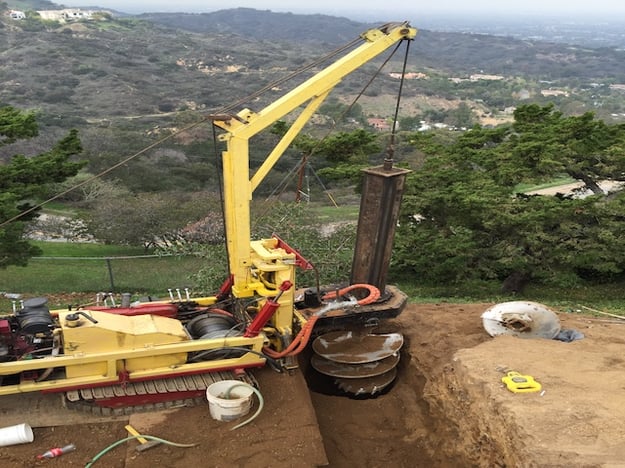
If your inground pool construction happens to be on a hillside, there are several costs associated with the extra complications of this terrain. Due to the elevation of this construction site, an extra step is required to ensure your pool is stabilized. This is referred to as “drilling caissons”, which is a necessary step when hitting bedrock to create a foundation to build upon to prevent your pool from sliding.
When a soil engineer provides the soil report to your pool contractor, the soil report will indicate how far below the ground bedrock is. Many times, bedrock is very deep, even twenty feet beneath the surface. When this is the case, a caisson needs to be built to hold up the structure of the pool. A caisson is a watertight foundation support system made by burying concrete and reinforced steel into the ground. They are comprised of thick steel, and depending on the diameter of the pool’s structure, this step alone can be pricey because of the materials and labor needed to construct and bury the caissons. We cannot provide a specific price range for these caissons since they will vary by project and are determined by the soil engineer if necessary.
Likewise, if the terrain is slightly downhill, your pool contractor may also need to build retaining walls prior to digging. These retaining walls are made out of concrete and aid in providing a permanent support structure. While this step would incur an additional cost, it may also be necessary to prevent any sliding.
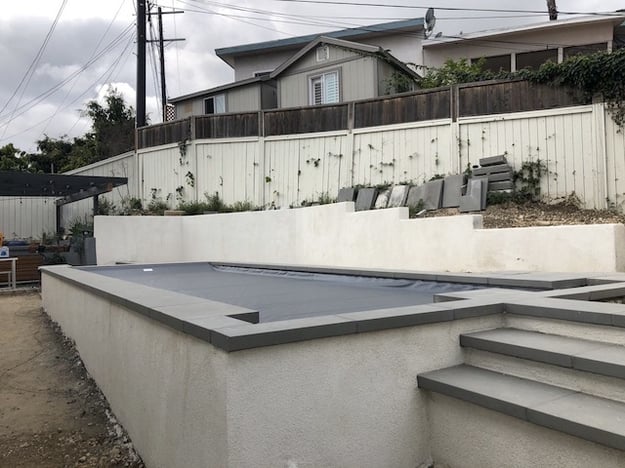
Safety is of the utmost importance in every pool construction project, and ensuring safety for hillside properties tends to incur a heftier cost.
Inground pool excavation gives the statement “hitting rock bottom” a whole new meaning.
You don’t know what you don’t know, and this is especially true when you excavate a pool, only to end up hitting a rock. Hitting this type of rock is very different from hitting bedrock, as it refers to discovering a massive boulder that is obstructing excavation. This type of unforeseen contingency is always possible once construction has begun, and the homeowner needs to be prepared for this potential additional cost.
In this situation, the price increases because the pool construction has to come to a halt while a different crew with different tools breaks the rocks. These rocks are usually boulders here in the California landscape that need to be broken up into smaller pieces and dug out through a process called a “rock dig.” This process would require additional equipment such as a rock hammer. Depending on the size of the boulder(s), the equipment may be needed for more than one day, and typically the use of the equipment is charged a flat rate per day.
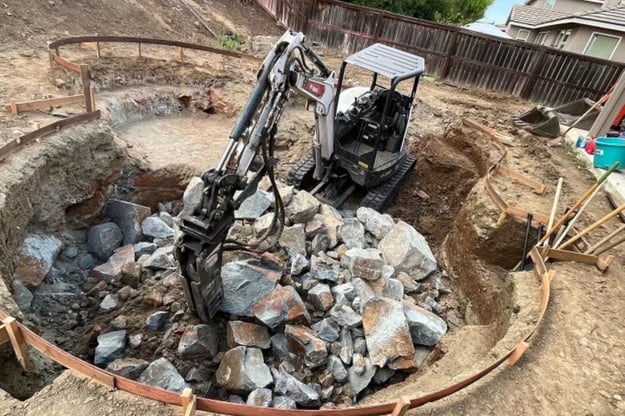
While Southern California has many different terrains, these boulders are most likely to be found in areas around the mountains like LA Crescenta and The Pasadena Foothills.
Alas, some surprises can’t be avoided. Nevertheless, any rock-solid pool contractor will make you aware of this contingency cost prior to construction so that it can be factored into your budget.
Now that you’ve read this article, you’ll be able to move forward in stride as you finalize your inground pool plans. While some costs will come with the territory (or, your territory), the keen insight into your pool’s various costs will set your mind at ease.
Foresight is the cornerstone of your peace of mind during the pool planning and construction process, and we set the bar in being completely transparent about hidden pitfalls concerning price.
At J Designs Pool and Spa, we’ve spent over 15 years educating our clients on the various unseen costs associated with their unique inground pool project. If you’re ready to plan for the pool of your dreams, we can help.
The first step to designing your pool with a view is to contact us and schedule a consultation!
Not yet ready to speak to a pool professional? Time is on your side! Check out these related articles for more information:
HOW MUCH DOES AN INGROUND CONCRETE POOL COST? PRICING BREAKDOWN 2023
.jpg)
When it comes to pool service, expertise is not optional; it’s required by law. In Los Angeles County, anyone performing maintenance, disinfection,...
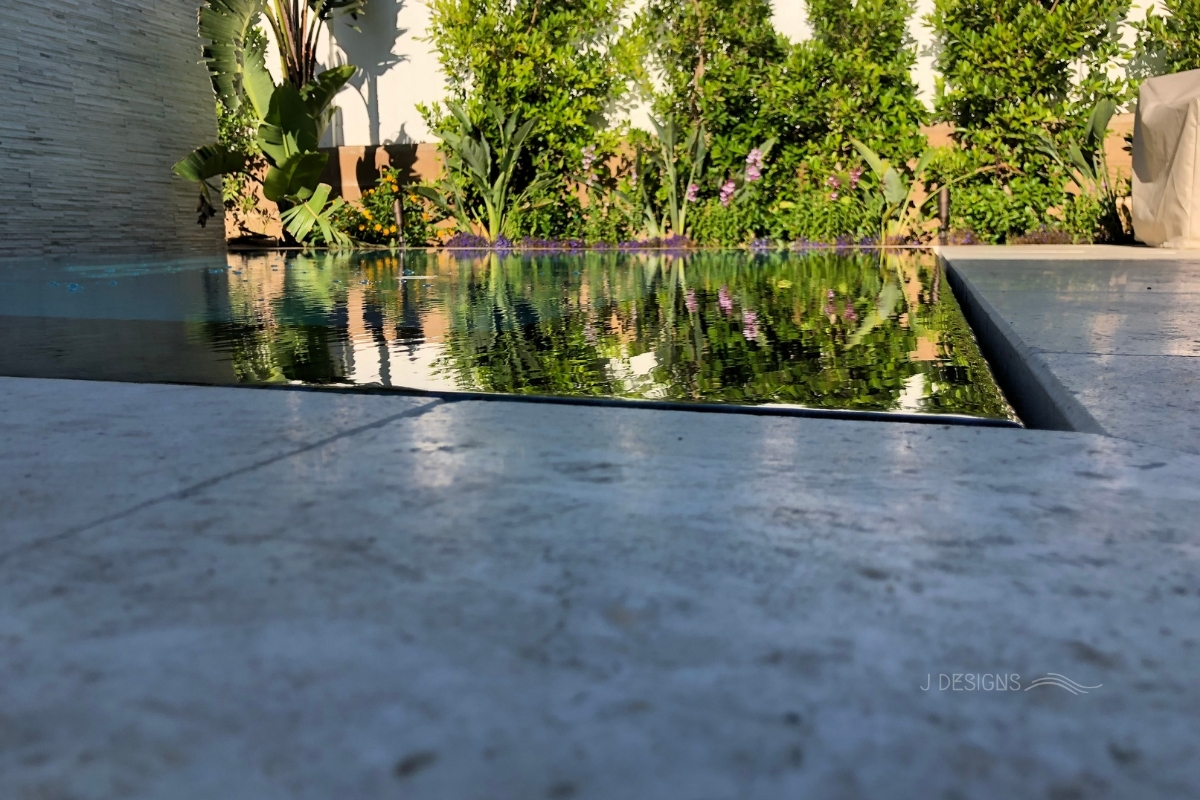
Have you ever seen a pool that looks like a mirror? Water blends seamlessly into the edge, perfectly level with the deck, flowing evenly in every...
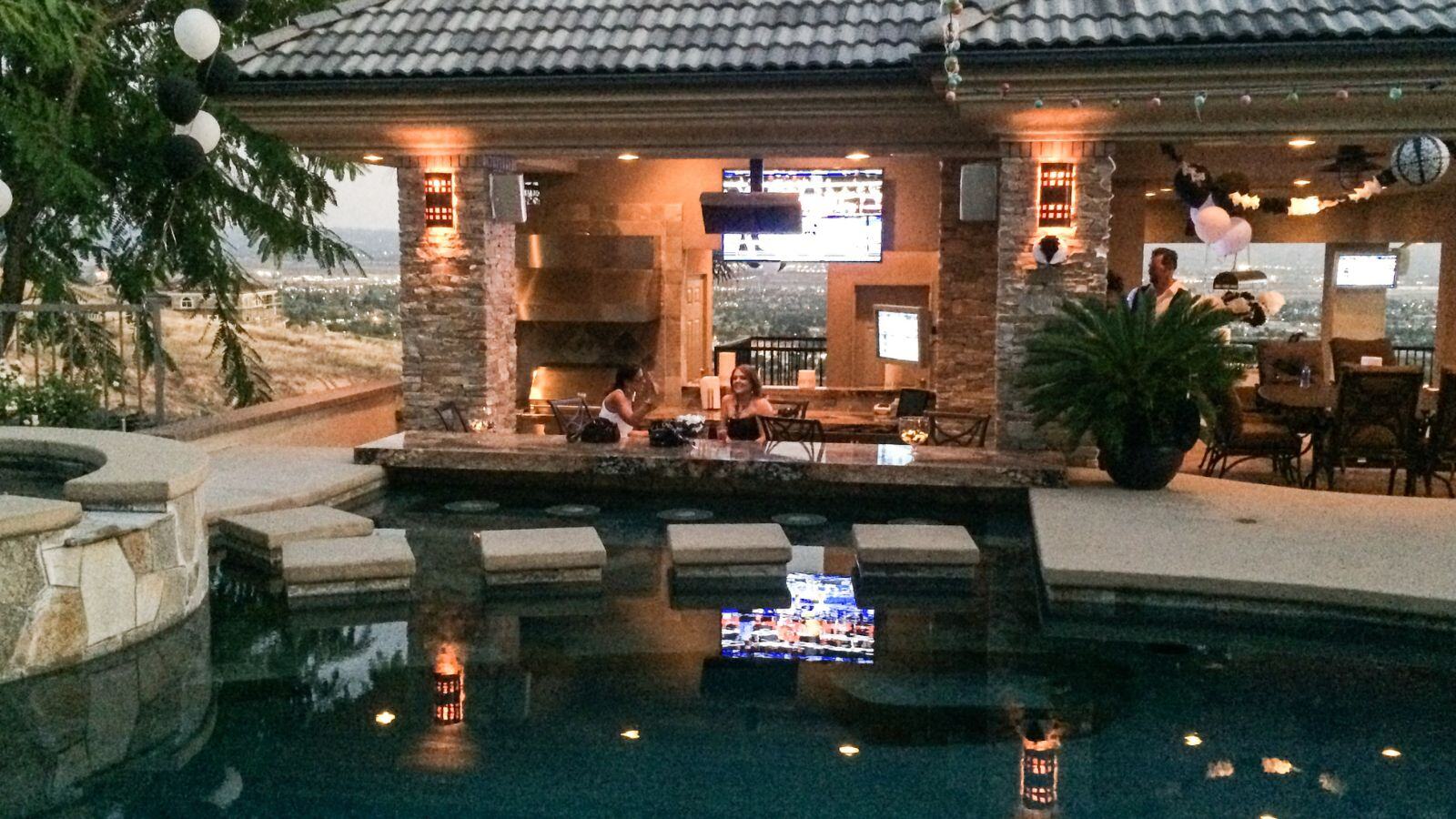
Pool season is here, and it’s not just about crystal-clear water anymore. Today’s most memorable backyards are multisensory experiences, and...